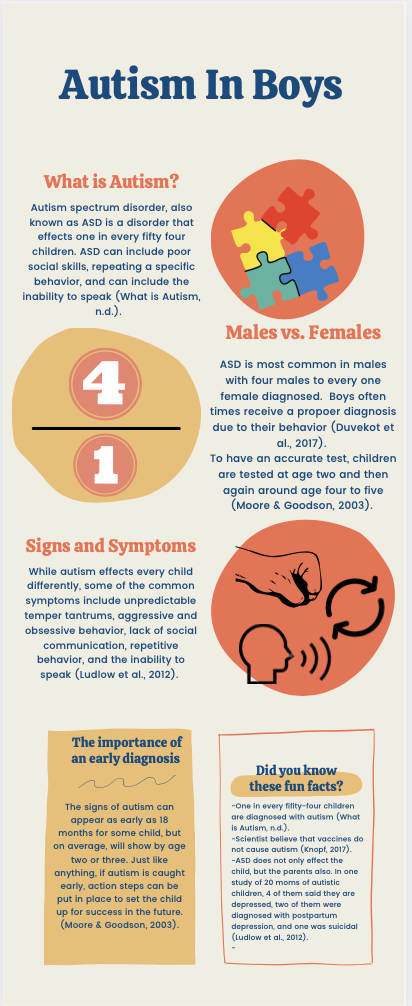How Autism Spectrum Therapies approach challenges in expression
How Autism Spectrum Therapies approach challenges in expression
Blog Article
Advertising Inclusivity: Exactly How to Create Encouraging Atmospheres for Those With Behavioral Autism
Producing supportive atmospheres for people with behavioral autism is essential for promoting inclusivity. What specific actions can you take to guarantee these people grow in different setups?
Comprehending Behavior Autism: Secret Qualities and Obstacles
Understanding behavioral autism includes acknowledging its vital characteristics and the challenges it presents. People with autism usually exhibit difficulties in social communication, interaction, and repeated habits.

Supporting someone with behavioral autism means being person and versatile. You'll need to produce an atmosphere that lessens tension and promotes comfort.
The Duty of Compassion in Supporting People With Autism
Compassion plays a vital role in sustaining individuals with autism by aiding you recognize their special point of views. By practicing energetic paying attention techniques, you can construct psychological connections that cultivate count on and communication - Aba Therapist. This understanding not only boosts your connection but likewise creates a much more supportive setting for them
Comprehending Special Viewpoints
When you consider the unique perspectives of people with autism, it comes to be clear just how essential compassion is in giving reliable assistance. Your capacity to understand allows you to create a setting where they really feel secure, valued, and comprehended. This supportive ambience encourages people with autism to reveal themselves, ultimately enhancing their health and development.

Active Paying Attention Strategies
Energetic paying attention techniques play an important function in sustaining individuals with autism, as they promote a much deeper connection and understanding. Reword what they claim to confirm your understanding, and ask flexible inquiries to encourage additional expression. By exercising these techniques, you create a risk-free room where individuals feel listened to and valued, ultimately improving their interaction and psychological well-being.
Building Emotional Connections
Developing a supportive environment with energetic paying attention normally results in developing psychological links with people on the autism spectrum. When you really engage, you're not simply hearing their words; you're understanding their feelings. This empathy promotes depend on, permitting them to share themselves openly. Use nonverbal cues, like eye get in touch with and nodding, to show you're existing and bought their experiences.

Reliable Interaction Techniques for Inclusivity
Effective interaction methods play a necessary function in fostering inclusivity for people with behavioral autism. Beginning by making use of clear, basic language that's understandable. Prevent idioms or abstract expressions; they can be complicated. Rather, be direct and particular regarding what you mean.
Nonverbal cues are similarly important. Focus on your body language, facial expressions, and intonation, as these can convey even more than words. Maintain eye get in touch with and usage gestures to improve understanding.
Additionally, hold your horses and give individuals time to procedure information. Motivate them to share their sensations and thoughts, revealing that their input is valued.
Energetic listening is important; repeat or reword what they have actually said to verify understanding. Adapt your communication approaches based on individual preferences, whether it's via visual help, composed guidelines, or various other tools. This personal touch enhances addition and helps construct meaningful connections.
Customizing Assistance Systems in Educational Settings
In instructional settings, you'll wish to concentrate on Individualized Education and learning Plans (IEPs) that satisfy each student's distinct requirements. Producing a sensory-friendly class style can likewise improve finding out by decreasing distractions and promoting comfort. Together, these strategies can foster an environment where students with autism grow.
Embellished Education And Learning Strategies
While navigating through the intricacies of autism in educational setups, Individualized Education Program (IEPs) play a necessary role in customizing assistance systems to meet each student's special demands. It's important to team up with teachers, professionals, and your child to produce a thorough strategy. Bear in mind, an effective IEP is not just a record; it's a living tool that adapts to your youngster's evolving requirements, guaranteeing they flourish in their academic setting.
Sensory-Friendly Classroom Design
Producing a sensory-friendly classroom can significantly improve the learning experience for trainees with autism. Begin by reviewing your classroom's illumination; soft, all-natural light can lower overstimulation. Incorporate adaptable seating alternatives, like bean bags or floor pillows, to permit students to find their comfort area. Use relaxing colors my blog on wall surfaces and decor to create a soothing environment. Take into consideration including sensory edges with fidget tools, noise-cancelling headphones, or weighted coverings for students who need breaks. Organize spaces to minimize clutter, helping students concentrate better. Establish clear regimens and signals to connect adjustments, reducing anxiousness. By making these changes, you'll produce an atmosphere where trainees with autism really feel much more supported and engaged in their understanding journey.
Creating Inclusive Workplaces for People With Autism
To foster a truly comprehensive work environment for individuals with autism, companies need to recognize the unique staminas and challenges these people bring. Begin by promoting clear interaction and offering detailed task descriptions that lay out expectations. This aids individuals recognize their functions better and minimizes anxiety.
Take into consideration executing flexible job arrangements, such as remote work or readjusted hours, to fit numerous individual preferences and sensory requirements. Educating your staff on autism recognition is vital; it can boost empathy and advertise a supportive environment.
Creating peaceful rooms where employees can reenergize during difficult minutes can also make a substantial difference. Urge using assistive innovations that aid improve jobs and boost efficiency.
Inevitably, valuing diversity will not just benefit individuals with autism yet will certainly also enhance the whole team, causing a much more dynamic and ingenious work environment. Embrace these methods to cultivate an atmosphere where everyone can prosper.
Encouraging Social Interaction and Neighborhood Interaction
Encouraging social communication and community interaction is vital for individuals with autism, as it helps develop confidence and cultivates purposeful connections. To create an encouraging setting, beginning by giving opportunities for individuals to connect with others in a comfortable setting. Arrange team tasks that provide to various interests, such as art courses, sporting activities, or social work tasks.
You can additionally facilitate smaller, structured my response gatherings where everyone can share their thoughts and experiences. Urge open interaction by modeling considerate listening and empathy. Developing peer mentorship programs can assist produce bonds and supply guidance.
Include family members and local organizations to expand the support network and promote inclusive events. Keep in mind, the key is to develop secure spaces where individuals with autism feel valued and comprehended. By fostering these links, you'll assist them flourish socially and create a feeling of belonging within the neighborhood.
Resources and Tools for Structure Supportive Atmospheres
While building supportive atmospheres for individuals with autism might appear challenging, a number of resources and devices can make the procedure less complicated and a lot more effective. Take into consideration using aesthetic supports like routines or social tales to help people understand their social circumstances and day-to-day routines. Apps made for communication, such as AAC (Augmentative and Alternate Communication) devices, can additionally enhance interaction.
Additionally, training programs for staff and volunteers on autism understanding can promote compassion and understanding in your area. Check into local organizations that provide resources or workshops tailored for supporting individuals with autism.
Producing sensory-friendly areas with soothing aspects-- like soft lights and quiet areas-- can benefit those who might become overwhelmed. Developing links with regional support groups can provide recurring advice and comments, assisting you refine your approach and warranty inclusivity for all.
Regularly Asked Concerns
Exactly How Can I Educate Others Concerning Behavioral Autism Properly?
To inform others regarding behavioral autism properly, share individual stories, provide clear sources, and motivate seminars - Autism Spectrum Therapies. Usage relatable instances and highlight the relevance of understanding different perspectives to foster compassion and understanding
What Prevail Misconceptions About Autism That Need Resolving?
You may think autism just impacts communication skills, yet that's simply one aspect. Lots of believe it's only a youth problem, when actually, it spans across every ages and materializes differently for every individual.
Exactly How Can I Support for Autism Understanding in My Area?
You can promote for autism recognition by organizing neighborhood occasions, sharing helpful sources, and working together with neighborhood organizations. Usage social media sites to spread the word, and urge open conversations to promote understanding and approval.
Exist Particular Sensory-Friendly Spaces for People With Autism?
Yes, many neighborhoods supply sensory-friendly spaces, like peaceful areas in collections, specialized play areas, or assigned hours at galleries. You can explore local sources and supporter for even more inclusive spaces to sustain people requiring them.
What Role Do Family Members Play in Supporting People With Autism?
Member of the family play a vital duty in sustaining people with autism. You can provide motivation, persistence, and understanding. By proactively taking part in their lives, you aid construct self-confidence and foster freedom, developing a supporting setting.
Creating supportive environments for individuals with behavioral autism is important for cultivating inclusivity.Creating a supportive environment through energetic paying attention normally leads to developing emotional connections with individuals on the autism range. Developing Inclusive Workplaces for People With Autism.
To promote a genuinely inclusive workplace for individuals with autism, companies need visit this website to acknowledge the distinct strengths and challenges these people bring. Keep in mind, the secret is to create secure rooms where people with autism feel valued and recognized.
Report this page